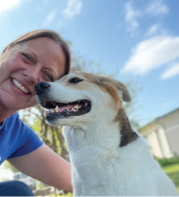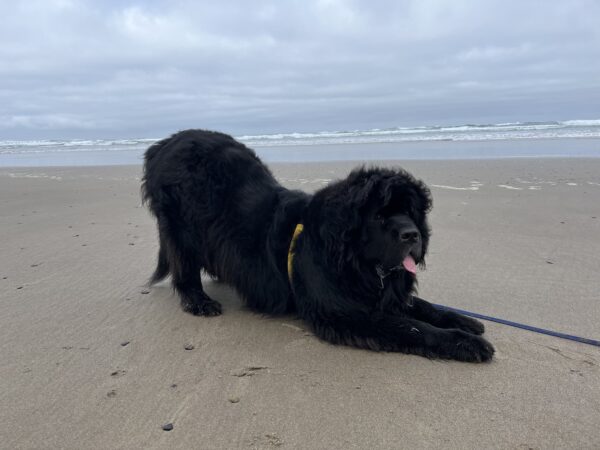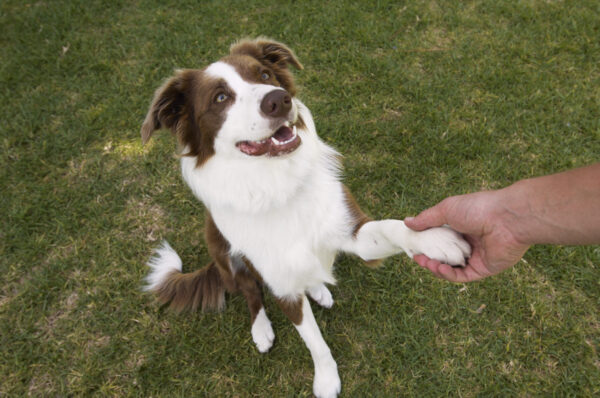Gone are the days of strict obedience dog training, so unless you aspire to compete in obedience, relax. Cues like sit, come and manners are important, but first, you need to establish a solid foundation. This includes teaching your dog to exist harmoniously with you and your family and fit comfortably into our human-centered world. How do we do this? Here are five dog training tips for beginners to point you (and your dog) in a zen-like direction.
The 5 Dog Training Tips for Beginners
1. Become versed in dog speak
Dogs are nonverbal, constantly communicating how they feel and what they want and need. So, understanding dog body language is key to not only building a solid relationship, but also to being successful in any training, sport or activity you do together.
2. Focus on enrichment and meeting your dog’s needs
Let your dog be a dog! Most behavior issues stem from boredom or lack of stimulation and exercise. Enrichment is meeting your animal’s species-specific needs by providing varied and optimal opportunities to engage in natural behaviors. Dogs love to sniff, dig, forage, chew, etc. Give your dog ample enrichment opportunities (breed-specific when possible) to keep her happy and content.
3. Discover what motivates your dog
Each dog is an individual. Since learning and behavior change are based on reinforcement, have fun playing detective, discovering what drives your dog. Create a food “ladder” by ranking foods your dog likes and those he loves; the idea is to have a ready-to-go chart of various levels of his favorite foods, a wow-factor for him each time you offer the food. Use lower-rung foods for easier training requests and graduate to higher rung foods for more challenging tasks. Break out the super snacks for the toughest gigs. Remember, it’s just food: experiment with dog-safe fruits, veggies, cheese balls, any type of treat he might like. Adjust meal portions accordingly (treats add calories to your dog’s daily food intake!) and avoid foods that are toxic to dogs.
Reminder: Don’t free feed, or offer unlimited amounts of food all day without a schedule. Not only does it compromise a powerful motivator, but it can lead to overeating and obesity.
Aside from food motivators, include praise and play when working your way up your food ladder!
4. Manage your dog’s environment
Set up your dog for success. Getting into the trash? Buy a covered can or put it in a closet. Counter surfing? Don’t leave things in reach. Shy dog? Don’t bring her to crowded events. Create environments and situations your dog can handle — don’t throw her in the deep end of the pool.
Reflect and rephrase. Instead of asking, “How do I stop my dog from digging in the garden?” ask, “How can I get my dog to dig in only appropriate places?” Hint: Read out article to find out how. This gives you something to train (win-win) rather than setting you up to punish your dog (always a lose-lose).
5. Be patient
Learning new behaviors (and changing existing ones!) is complicated — don’t expect your dog to “get it” immediately. Sociologists say it takes 21 days on average for humans to form a new habit, so expect to put in at least a few weeks teaching your dog new stuff. Sure, she might learn Sit in one or two quick sessions, but it’s a whole different ball game for her to generalize or know that Sit means Sit no matter where she is, what else is going on around her or who is around.
Start small, work tall. Don’t expect middle school-level mastery if you’re putting in grade school effort. Again, set her up for success and break your training up into smaller steps when necessary.
If your work feels challenging, contact a qualified professional rewards-based trainer. Support and guidance go a long way for your dog and minimize frustration for you. Laugh, celebrate little victories and expect things will be wonky sometimes. Mistakes are an integral part of learning for both you and your dog. Find a rhythm and have fun!






